The Great Gatsby

Brief Synopsis
Cast & Crew
Jack Clayton
Robert Redford
Mia Farrow
Bruce Dern
Karen Black
Elliott Sullivan
Film Details
Technical Specs
Synopsis
In the 1920s, Nick, a young Midwestern man, rents a cottage among the mansions on Long Island and is drawn into the social circle of his wealthy neighbor, the mysterious Jay Gatsby. During his time with the old aristocracy and the nouveau riche, Nick becomes a witness to superficiality and obsessions that lead to tragedy.
Director
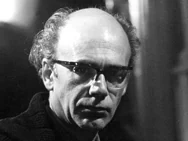
Jack Clayton
Cast
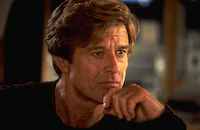
Robert Redford
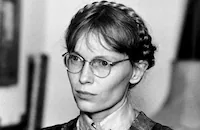
Mia Farrow

Bruce Dern

Karen Black
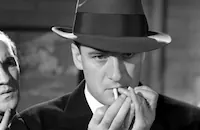
Elliott Sullivan
Jerry Mayer
John Devlin
Patsy Kensit-healy
Norman Chauncer
Kathryn Leigh Scott

Edward Herrmann
Marjorie Wildes
Louise Arters
Sammy Smith
Arthur Hughes
Paul Tamarin
Janet Arters

Tom Ewell
Lois Chiles
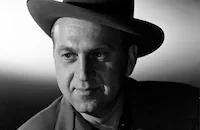
Howard Da Silva
Beth Porter
Bob Sherman
Roberts Blossom
Vincent Schiavelli
Regina Baff
Oliver Clark

Scott Wilson
Sam Waterston
Crew
Theoni V. Aldredge
Ken Barker
John Box
Norman I Cohen
Francis Ford Coppola
Annabel Davis-goff
F. Scott Fitzgerald
Ramon Gow
Alex Hapsas
Mary Jane Houdina
Peter Howitt
Robert Laing
Irene Lamb
Gary Liddiard
David Merrick
Hank Moonjean
Herb Mulligan
Charles Parker
Peter Edward Price
Tom Priestley
Terry Rawlings
Nelson Riddle
Nelson Riddle
Eugene Rudolf
Woody Shelp
Brian Simmons
Jeanie Sims
Douglas Slocombe
Douglas Slocombe
Tony Stevens
David Tringham
Robin Vidgeon
Chic Waterson
Videos
Movie Clip


Promo
Film Details
Technical Specs
Award Wins
Best Costume Design
Best Score
Articles
The Great Gatsby (1974)
It had been planned as a showcase for a female star -- Ali MacGraw, who was set to play the love of Jay Gatsby's life. MacGraw, production chief Robert Evans' wife, had starred in two previous Paramount hits, Goodbye, Columbus (1969) and that tear-jerking phenomenon Love Story (1970). When she left Evans for Steve McQueen (who would have been an arresting Gatsby), The Great Gatsby could no longer be a MacGraw movie, but it was established at Paramount as a Very Important Picture. It ended up a star vehicle for Robert Redford, who played Gatsby. He failed to imbue the role with the danger and the edge he'd brought to smaller films like Downhill Racer (1969), or to ignite the romance between Gatsby and that hothouse butterfly Daisy Buchanan, ultimately played by Mia Farrow. Farrow conveyed the full span of Daisy's moods and emotions; she knew how to put over Daisy's swoony affectations -- she calls her distant cousin, Nick Carraway, "a rose, an absolute rose" -- in a voice that registered "like money." But without an attentive partner, Farrow could only be intermittently affecting. Pauline Kael summed up the movie's lack of erotic radiance in her famous piece on Cary Grant (The Man from Dream City). "Redford has never been so radiantly glamorous as in The Way We Were [1973], when we saw him through Barbra Streisand's infatuated eyes," Kael wrote. "But in The Great Gatsby, when Redford needed to do for Mia Farrow what Streisand had done for him, he couldn't transcend his immaculate self-absorption. If he had looked at her with desire, everything else about the movie might have been forgiven. Cary Grant would not have failed; yearning for an idealized love was not beyond his resources."
And yet, no one could look more like Fitzgerald's conception of Gatsby than Redford does at times here, especially when he's playing at being an urbane gentleman with Howard Da Silva's indelibly pragmatic, oddly honorable gambler Meyer Wolfsheim. When Gatsby introduces him to struggling bond salesman Carraway (Sam Waterston), his Long Island neighbor, and later explains to Nick that Wolfsheim is the man who singlehandedly fixed the 1919 World Series, you see Redford at his most alert, bridging the bootlegger/socialite's two worlds.
The cast is full of talented, individualistic actors: Scott Wilson (In Cold Blood, 1967) as car mechanic and gas station operator George Wilson, Karen Black as Myrtle, Wilson's wife, and Bruce Dern as Tom Buchanan, Daisy's husband and Myrtle's lover. They all seem to be acting in separate movies. Yet there's brilliance in Wilson's depiction of quiet desperation. And the movie's semi-infatuated, semi-appalled view of deluxe flapper culture has a contemporary resonance. What The Great Gatsby depicts is what Bill Maher regularly complains about: "the bubble" inhabited by the most powerful and moneyed members of society. People like the feckless Daisy and her loutish, pretentious, racist husband Tom live in a cloud of champagne foam. They float away from catastrophes of their own making.
By 1974, with the counterculture already on the wane, Paramount of all the major studios had come closest to making and/or distributing films that attracted wide audiences, like Rosemary's Baby (1968) and The Godfather (1972), as well as films that had cult or niche appeal, like Hal Ashby's Harold and Maude (1971) and Costa-Gavras's The Confession (1970). It's not clear who brought the British filmmaker Clayton onto the picture, MacGraw or Warren Beatty (briefly a candidate for Gatsby). But it was hardly a complacent or frivolous choice. Clayton had made three marvelous adaptations: Room at the Top (1959), from John Braine's class-conscious novel about a provincial Englishman on the make; The Innocents (1961), from The Turn of the Screw, a novella by Henry James, one of the few American authors with a style even more nuanced and glancing than Fitzgerald's; and The Pumpkin Eater (1964), from Penelope Mortimer's novel about a woman on the verge of a nervous breakdown. It was Clayton who brought on his Innocents adapter, Truman Capote, to do the screenplay, and Paramount who then hired Coppola for it when Capote didn't work out.
Coppola loves to say that he took the job for money, but he wrote a brilliant script -- and you can still see its skeleton in Clayton's movie. Clayton's major complaint was that the script was "too long." So he mistakenly set about pruning and combining scenes. Too bad he (or the studio) didn't trust Coppola's instinctual mastery of dramatic suspense and narrative ebb and flow. In Coppola's script, when Daisy tells Gatsby she hoped at her daughter's birth that she would "be a little fool," because "That's the best thing a girl can be in this world...a beautiful little fool," it has a plaintive, haunting quality that lodges in the mind and grows more ominous as her affair with Gatsby takes hold. But Clayton doesn't build to it or from it in the movie; viewers don't immediately register how bitterly Daisy is indicting herself. In Coppola's scenes, when Gatsby asks Daisy why she didn't wait for him, he becomes a full-blown romantic hero -- a combination of Heathcliff and the Count of Monte Cristo, a man with an elemental inability to "let go" and a drive to beat the aristocrats at their own game. But the movie softens his image in a dewy amorous montage. Clayton thought we needed to see the substance of the affair; then he didn't give it any substance.
Coppola's screenplay builds scenes and accumulates details the way his first two Godfather scripts did. (The horses in the Buchanan stables, almost an equine chorus, sense emotional tumult the way non-fictional horses do impending earthquakes or bad weather.) And he combines his novelistic sense of character and texture with his born theater-artist's knack for putting the right line in the right place. He uses narration sparingly and unerringly; when he places Nick's praise for Gatsby's "romantic readiness" near the beginning of the movie (instead of, like Clayton, near the end), he immediately sets the right narrative pitch and establishes Gatsby as a charismatic mystery: "Gatsby, with his extraordinary gift for hope, a romantic readiness such as I have never found in any other person... and which it is not likely I shall ever find again."
If Clayton had trusted Coppola's instincts, length wouldn't have been a problem here any more than it was in the Godfather films. Gatsby's endless, hollow wild parties, with their flowing alcohol and unhinged flappers, might have functioned the way the wedding and communion-party scenes did in the Godfathers -- as, simultaneously, reflections of the anti-hero's ambitions and counterpoints to his back-room secrets. Every now and then a sparkling talent flashes out - just looking at the young Brooke Adams' sparkling face around a party table (she doesn't have a line), you know she would have been better than Lois Chiles as socialite-athlete Jordan Baker, Nick's own troubling love interest. The 1949 Great Gatsby, an unabashed melodrama that now shows up at film noir festivals, at least had that underrated star Alan Ladd playing Gatsby as equal parts hard guy and romantic. (Da Silva, the 1974 film's Wolfsheim, played Wilson in the 1949 movie, which does have one classic moment: Ladd's Gatsby running outside Nick's cottage in the rain as soon as Daisy appears, so he can knock on the front door after she walks in, and greet her as if he just arrived.)
The way Coppola's screenplay sets up the climax, complete with throttled violence, accusations screamed across a hotel dining room, and of course, an accidental death, murder, and a suicide, it's as if Coppola is rediscovering the roots of American noir fiction. He's saying, "Hey, it didn't just start with Fitzgerald's pal Hemingway but here, with Daisy, a femme fatale in debutante's clothing." But Redford's Gatsby sends no tingle through the air; the actor isn't hitting on all cylinders. Clayton may have lacked the ear and instinct for American dialogue and characters to help his powerful star out. (Clayton's last great adaptation, his 1987 version of The Lonely Passion of Judith Hearne, was set and filmed in Ireland.) From the first shot, when Nick guides his motorboat from West Egg across the Long Island Sound to East Egg and reaches land just as Tom gallops to shore on his polo horse, Clayton and his celebrated cameraman, Douglas Slocombe, who worked on films as different as The Lavender Hill Mob (1951) and the first three Indiana Jones movies, devise elegant, fluid camera movements. But without the sense of Daisy's culture opening up to the camera like a daisy to the sun, the film comes off as static. Gatsby still stares at the green light at the end of the Buchanans' dock; too bad it no longer deeply echoes the hopes of the pilgrims who first came to this green continent.
You watch this Great Gatsby for its isolated pleasures, for its suggestions of what might have been, and as an artifact of an era when studios took enormous risks. In that way, it becomes an experience worthy of Fitzgerald. As he wrote in the book's knockout last line, "So we beat on, boats against the current, borne back ceaselessly into the past."
Producer: David Merrick
Director: Jack Clayton
Screenplay: Francis Ford Coppola (screenplay); F. Scott Fitzgerald (novel)
Cinematography: Douglas Slocombe
Art Direction: Robert W. Laing, Eugene Rudolf
Film Editing: Tom Priestley
Cast: Robert Redford (Jay Gatsby), Mia Farrow (Daisy Buchanan), Bruce Dern (Tom Buchanan), Karen Black (Myrtle Wilson), Scott Wilson (George Wilson), Sam Waterston (Nick Carraway), Lois Chiles (Jordan Baker), Howard Da Silva (Meyer Wolfsheim), Roberts Blossom (Mr. Gatz), Edward Herrmann (Klipspringer)
C-143m.
by Michael Sragow

The Great Gatsby (1974)
Vincent Schiavelli (1948-2005)
He was born on November 10, 1948 in Brooklyn, New York. After he studied acting at New York University's School of the Arts, he quickly landed a role in Milos Foreman's Taking Off (1971), and his career in the movies seldom dropped a beat. Seriously, to not recognize Schiavelli's presence in a movie or television episode for the last 30 years means you don't watch much of either medium, for his tall, gawky physique (a towering 6'6"), droopy eyes, sagging neck skin, and elongated chin made him a casting director's dream for offbeat and eccentric parts.
But it wasn't just a striking presence that fueled his career, Schiavelli could deliver the fine performances. Foreman would use him again as one of the mental ward inmates in One Flew Over the Cuckoo's Nest (1975); and he was hilarious as the put-upon science teacher, Mr. Vargas in Fast Times at Ridgemont High (1982); worked for Foreman again as Salieri's (F. Murray Abraham's) valet in Amadeus (1984); unforgettable as an embittered subway ghost who taunts Patrick Swayze in Ghost (1990); downright creepy as the brooding organ grinder in Batman Returns (1992); worked with Foreman one last time in The People vs. Larry Flynt (1996); and was a dependable eccentric in Death to Smoochy (2002). Television was no stranger to him either. Although he displayed a gift for comedy playing Latka's (Andy Kaufman) confidant priest, "Reverend Gorky" in a recurring role of Taxi, the actor spent much of his time enlivening shows of the other worldly variety such as Star Trek: The Next Generation, Tales from the Crypt, The X Files, and Buffy the Vampire Slayer.
In recent years, Schiavelli curtailed the acting, and concentrated on writing. He recently relocated to the Sicilian village of Polizzi Generosa, where his grandparents were raised. He concentrated on his love of cooking and in 2002, wrote a highly praised memoir of his family's history as well as some cooking recipes of his grandfather's titled Many Beautiful Things. He is survived by two children.
by Michael T. Toole
Vincent Schiavelli (1948-2005)
Quotes
And when I was in the delivery room, waking up from the ether, I asked the nurse whether it was a boy or a girl. She said it was a girl -- and I turned my head to the side and cried. And then I said, I hope she grows up to be a pretty little fool. That's about the best a girl can hope for these days, to be a pretty little fool.- Daisy Buchanan
I was raised in America but educated in Oxford. That's a family tradition.- Jay Gatsby
Kutslinger has been here since a party I threw in April. I didn't even realize he was here until two weeks ago.- Jay Gatsby
(embracing a shirt and weeping, presumably from joy, as Gatsby gleefully throws dozens of imported golf shirts across the room) I've never seen such beautiful shirts before.- Daisy Buchanan
They say you killed a man.- Nick Carraway
Only one?- Jay Gatsby
Trivia
Originally, Truman Capote was the screenwriter, and his draft included making Nick a homosexual and Jordan Baker a vindictive lesbian. Capote was fired, and Francis Ford Coppola finished his draft in three weeks.
The rights for the novel were purchased by producer Robert Evans in 1971 so that his wife at the time, Ali MacGraw, could play the part of Daisy. A shooting script wasn't ready yet, and MacGraw agreed to star in Getaway, The (1972) as filler. During the production of Getaway, The (1972) MacGraw fell in love with her co-star 'McQueen, Steve' and left Evans for him. Mia Farrow was then picked to play Daisy.
Mia Farrow was pregnant during filming and the director filmed around that by including close up shots of Farrow, and having her wear a lot of flowing costumes.
Patsy Kensit who plays the very young daughter of Mia Farrow's character in this movie later portrayed Mia Farrow herself in Love and Betrayal: The Mia Farrow Story (1995) (TV) which included a re-enactment of the filming of The Great Gatsby.
Howard Da Silva, (Meyer Wolfsheim), was also in Great Gatsby, The (1949) where he played the part of Wilson.
Miscellaneous Notes
Released in United States 1974
Re-released in United States on Video January 26, 1994
Truman Capote wrote the original adaptation of this version, but it was abandoned in favor of Coppola's script.
Re-released in Paris August 8, 1990.
Released in United States 1974
Re-released in United States on Video January 26, 1994














